Rabbits are fascinating little animals that have been kept as pets for many, many years now.
With so many different breeds of rabbits available, it can be overwhelming to decide which one is right for you. Or maybe you’re just an enthusiast who wants to know about different breeds of rabbits.
The American Rabbit Breeds Association (ARBA) declares there to be 49 different rabbit breeds. These include wild and domesticated rabbits that are found across the globe.
In this article, we will explore 49 different rabbit breeds (with pictures) and provide you with valuable information about each one.
We will cover the weight, fur type, its status, as well as some important things you should know about each breed of rabbit.
Whether you’re a seasoned rabbit owner or considering getting your first rabbit, this comprehensive guide will help you make an informed decision about which breed is the perfect fit for you and your lifestyle.
So, let’s dive into the world of rabbits and discover the unique traits that make each breed so special!
The American (Blue and White) Rabbit
- Country of American (Blue and White) Rabbit Origin: US
- Year Rec.: 1918
- Weight (Lbs): 12
- Status: Threatened
- Fur Type; Flyback
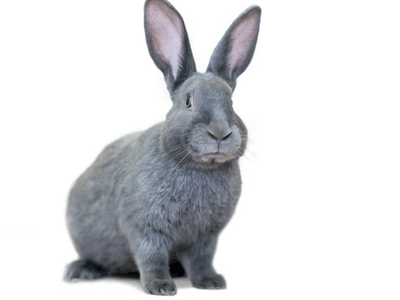
It was likely created by incorporating several blue-pelted breeds, including Beveren, Blue Vienna, Flemish Giant, and Imperial.
The breed was originally called the German Blue Vienna, but due to America’s conflict with Germany in World War I, the name was changed to American.
The breed was popular for both its meat and fur, but its popularity declined, and it is now considered a threatened breed.
However, since 1990, a few score breeders have helped the breed rebound due to their fondness for the American’s beautiful white or blue coat, tasty meat, or show qualities.
American Chinchilla Rabbit
- Country of American Chinchilla Rabbit Origin: US
- Year Rec.: 1924
- Weight (Lbs): 12
- Status: Critically Threatened
- Fur Type; Rollback; 1 1/8 –1 3/8 inches (2.9–3.5 cm) long; very dense, bright, smooth, glossy

Named after its fine, earth-toned fur that resembles that of the wild chinchilla. It is the middleweight of the three Chinchilla Rabbit breeds, with a maximum weight of 12 pounds.
The breed was created in the 1920s by American breeders seeking a larger version of the Chinchilla breed imported from France.
However, with the decline in demand for rabbit fur and a preference for using white-coated rabbits for meat, the American Chinchilla became endangered after World War II.
American Fuzzy Lop Rabbit
- Country of American Fuzzy Lop Rabbit Origin: US
- Year Rec.: 1988
- Weight (Lbs): 4
- Status: Not Threatened
- Fur Type; Wool; dense, slightly coarse

The American Fuzzy Lop is a breed of rabbit that was created in the 1980s by Patty Greene-Karl through a careful breeding program.
Prior to this, the fuzzy wool coat was only found incidentally in lops, as a result of French Angora blood being introduced to Holland Lops.
The American Fuzzy Lop has a wooly, compact, muscled body with solid shoulders and hindquarters, similar to its Holland Lop forebears.
Its fur is slightly coarse and of consistent length all over the body, with a minimum length of 1 inch and a preferred length of 2 inches.
The Fuzzy Lop’s ears are lop-eared and flop down below its jaw, up to 1 full inch in length.
American Sable Rabbit
- Country of American Sable Rabbit Origin: US
- Year Rec.: 1931
- Weight (Lbs): 10
- Status: Not Threatened
- Fur Type; Rollback; fine, soft, dense
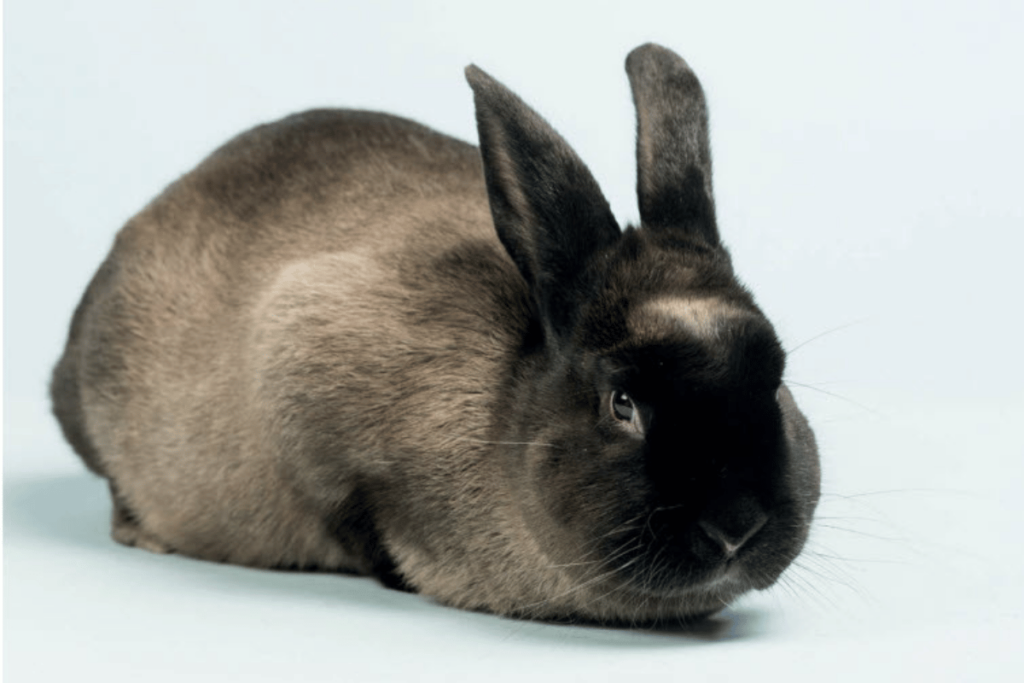
The American Sable rabbit breed was developed in 1924 using Chinchilla rabbits from California.
By 1931, the breed had a distinct color variation and was separate from the Chinchilla and Sable rabbits of England.
The American Sable has a medium size, erect ears, and sepia brown coat with a soft, dense undercoat.
In the 1970s, the breed declined but was saved from extinction in the early 1980s by introducing new blood from other rabbit breeds.
Although still uncommon, the American Sable breed is no longer at risk of extinction.
Argente Burn Rabbit
- Country of Argente Burn Rabbit Origin: France
- Year Rec.: 2015
- Weight (Lbs): 10.5
- Status: being studied
- Fur Type; Flyback; ARBA Commercial Normal Fur Standard
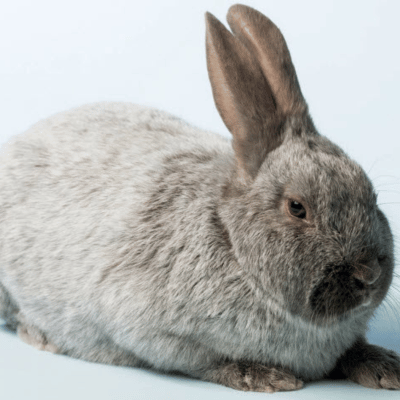
The Argente Brun is a breed of rabbit recently added to the ARBA roster.
It was first established in France in the late 1800s and re-engineered in England in the early days of World War II.
The American version was created by Charmaine Wardrop in 2005 and is larger than its European counterpart, with an ideal weight of 9-10 pounds.
It has a brown coat, longer fur, and richer color due to the addition of brown Beverens into its bloodlines.
Belgian Hare Rabbit
- Country of Belgian Hare Rabbit Origin: England
- Year Rec.: 1914
- Weight (Lbs): 9.5
- Status: Threatened
- Fur Type; Flyback; ARBA Commercial Normal Fur Standard
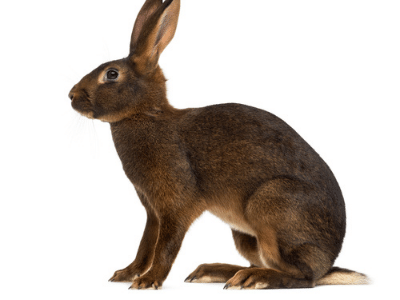
The Belgian Hare is a breed of domestic rabbit that resembles a wild hare in its slender, full-arch body.
Its genetic origins are unknown but likely include Flemish Giant, Patagonian Rabbit, and Stone Rabbit. Winter W. Lumb refined the breed into a fixed breed and imported them to England in the 1870s.
The breed became popular in the United States, with 6,000 rabbits imported in 1900.
The Belgian Hare was instrumental in kickstarting the US rabbit industry, and its popularity remained until the 1920s.
Belgian Hares are easily recognized by their long front legs and ears, deep red-tan, or chestnut fur with a slate undercolor.
Beveren Rabbit
- Country of Beveren Rabbit Origin: Belgium
- Year Rec.: unknown
- Weight (Lbs): 12
- Status: being watched
- Fur Type; Rollback; 1.25 –1.5 inches (3.2–3.8 cm) long; dense, glossy
The Beveren rabbit is a breed known for its high-quality meat, fur, and exhibition qualities.
Despite originating from Belgium in the late 1890s, it has never been popular in North America.
The breed was a key part of the early American rabbit fur industry due to its silky coat.
Beverens have a distinctive curved forehead and V-shaped ears that distinguish them from other breeds.
They also make good outdoor pets, and their coats thicken in cold weather.
Blanc de Hotot Rabbit
- Country of Blanc de Hotot Rabbit Origin: France
- Year Rec.: 1979
- Weight (Lbs): 11
- Status: Threatened
- Fur Type; Rollback; 1.25 inches (3.2 cm) long ideal; dense, lustrous, fine
The Blanc de Hotot is a rare breed of rabbit that was developed by French breeder Eugenie Bernhard in the early 1900s by selectively breeding the French Giant Papillon.

Bernhard aimed to minimize markings in the breed, but Swiss and German fanciers later bred for the dark eye band that the breed is known for today.
The Blanc de Hotot almost disappeared during World War II, but a few remained in Switzerland and Germany.
The breed was first imported to the United States in 1978 and is known for its thick-set, well-rounded body and fine, dense fur with numerous guard hairs creating a sheen. The ideal fur length is 1 inch (3.2 cm).
Brittania Petite Rabbit
- Country of Brittania Petite Rabbit Origin: England
- Year Rec.: 1978
- Weight (Lbs): 2.5
- Status: Not Threatened
- Fur Type; Flyback; ARBA Commercial Normal Fur Standard; smooth, short, dense
The Petite has a high-energy personality and can be feisty in certain situations.
It is a modified Polish breed that was crossed with Belgian Hares and later introduced Netherland Dwarf genes to expand the color range.
The name “Britannia Petite” was given to the British version of the Polish breed by North American fanciers in the 1970s.
The Petite can be identified by its small size, full-arch conformation, and erect ears that tend to touch throughout their length.
Californian Rabbit
- Country of Californian Rabbit Origin: US
- Year Rec.: 1939
- Weight (Lbs): 10.5
- Status: Not Threatened
- Fur Type; Flyback; ARBA Commercial Normal Fur Standard
The Californian rabbit was developed by George S. West in California in 1923 as a fur- and meat-producing breed.
West wanted a breed that consistently yielded fine fur and meat and experimented with Himalayan and Standard Chinchilla Rabbits before settling on the Californian breed.
The Californian is a white rabbit with nearly black points and has similar markings to the Himalayan Rabbit but is more than twice the size.
It is plump, firm, and has an unusually high yield of muscle, making it important to commercial meat producers. The breed also makes an attractive and good-natured pet.
Champagne D’Argent Rabbit
- Country of Champagne D’Argent Rabbit Origin: France
- Year Rec.: circa 1932
- Weight (Lbs): 12
- Status: Not Threatened
- Fur Type; Flyback; ARBA Commercial Normal Fur Standard

The Champagne d’Argent is an old breed of rabbit that likely originated in the Champagne region of France, possibly developed by Benedictine monks for its fur and meat.
Today, the breed is raised for show, fur, and meat, and is known for its dense, glossy, silvery fur with dark trim and black hairs.
The ideal weight is around 10.5 pounds, and it can be distinguished from the similar Crème d’Argent by its pewter-toned fur and dark nose and muzzle.
Checkered Giant Rabbit
- Country of Checkered Giant Rabbit Origin: Germany
- Year Rec.: 1914
- Weight (Lbs): 11
- Status: Not Threatened
- Fur Type; ARBA Commercial Normal Fur Standard
The Checkered Giant is a North American breed of rabbit with no maximum weight in the breed standard, but they typically weigh between 11 and 16 pounds.
They have the full-arch conformation and distinctive black or blue markings on a predominantly white coat.
The breed originated in Germany in the late 1800s and was refined by Otto Reinhardt in the early 1900s.
It was imported to the United States in 1910, and American breeders continued to develop the breed into what it is today.
Cinnamon Rabbit
- Country of Cinnamon Rabbit Origin: US
- Year Rec.: 1972
- Weight (Lbs): 11
- Status: Not Threatened
- Fur Type; ARBA Commercial Normal Fur Standard
The Cinnamon Rabbit is a breed with a distinct cinnamon or russet color, which sets it apart from other similar-sized rabbit breeds.
It originated accidentally in Missoula, Montana, in 1962 when a New Zealand white buck mated with a Chinchilla doe.
The breed was further developed by crossing with a crossbred Checkered Giant/Californian doe.
The Cinnamon Rabbit was recognized as a distinct breed by the ARBA ten years later. They are good-natured pets and show animals, and although uncommon, they are available throughout the United States.
Crème d’Argente Rabbit
- Country of Crème d’Argente Rabbit Origin: France
- Year Rec.: 1938
- Weight (Lbs): 11
- Status: recovering
- Fur Type; ARBA Commercial Normal Fur Standard

The Crème d’Argent is a rabbit breed recognized by ARBA with its origin dating back to mid-1800s France.
It has golden-white fur with an orange undercoat and orange guard hairs, and advancing age lightens its fur.
The breed was introduced to the US in the 1920s but was initially criticized for having black ears and guard hairs.
Harry Clauss of Canandaigua, New York, eliminated the unwanted dark fur by adding fawn-colored Flemish to the Crème gene pool.
The breed was officially welcomed by ARBA in 1938. Despite having a luxurious coat, the Crème d’Argent never gained popularity in North America but is now recovering after being previously on The Livestock Conservancy’s threatened list.
Dutch Rabbit
- Country of Dutch Rabbit Origin: Belgium, England
- Year Rec.: 1922
- Weight (Lbs): 5.5
- Status: Not Threatened
- Fur Type; Flyback; ARBA Commercial Normal Fur Standard; dense, short, lustrous

The Dutch Rabbit is a breed of rabbit with a white face and a white saddle flanked by a dark head, ears, and hindquarters.
They have short, dense fur and stand upright on their compact body.
The breed originated in Belgium and the Netherlands and was selectively bred in England to develop consistently two-toned Dutch Rabbits in the 1880s.
The breed’s small size and reputation for being hardy, adaptable, and robust making it a popular pet, with female Dutch often used as foster mothers. The ARBA recognized the breed in 1922.
Dwarf Hotot Rabbit
- Country of Dwarf Hotot Rabbit Origin: Germany
- Year Rec.: 1984
- Weight (Lbs): 3
- Status: Not Threatened
- Fur Type; Rollback; soft, dense, fine, lustrous

German breeders in the late 1970s experimented with breeding Netherland Dwarfs with Blanc de Hotots to develop a small, all-white rabbit with distinct eye bands.
This resulted in the creation of the Dwarf Hotot, which was further refined by Elizabeth Forstinger and accepted by the ARBA in 1984.
The Dwarf Hotot has short, erect ears and a compact conformation like the Netherland Dwarf but is larger than it, weighing around 3 pounds.
Only two other breeds recognized by the ARBA typically weigh less than the Dwarf Hotot.
English Angora Rabbit
- Country of English Angora Rabbit Origin: England
- Year Rec.: 1910
- Weight (Lbs): 7.5
- Status: Not Threatened
- Fur Type; Wool, with great density

Angora rabbits are known for their long, thick fur, which can be harvested for wool without harm to the animal.
The English Angora is the smallest of the four recognized Angora breeds and requires the most grooming due to its easily-matting fur.
Angoras were developed in England but have French-type ancestors, and can be traced back in the United States to the 1840s.
English Lop Rabbit
- Country of English Lop Rabbit Origin: England
- Year Rec.: 1914
- Weight (Lbs): 10.5
- Status: Not Threatened
- Fur Type; Flyback; ARBA Commercial Normal Fur Standard; fine, silky, medium length

The English Lop breed of rabbit has absurdly long droopy ears, measuring up to 30 inches (76 cm) from tip to tip across the skull.
It is considered the progenitor of all lop breeds and was first exhibited by English rabbit breeders in the 1820s.
The breed reached America in the 1840s and played a major role in generating interest in domestic rabbits in North America.
By 1945, the breed was in serious decline due to selective breeding for enormous ears, but it was reconstituted with French Lop genes by Meg Brown of Scotland in the 1960s, leading to a resurgence in popularity.
English Spot Rabbit
- Country of English Spot Rabbit Origin: England
- Year Rec.: 1914
- Weight (Lbs): 8
- Status: Not Threatened
- Fur Type; Flyback; ARBA Commercial Normal Fur Standard; short, dense, fine, lustrous
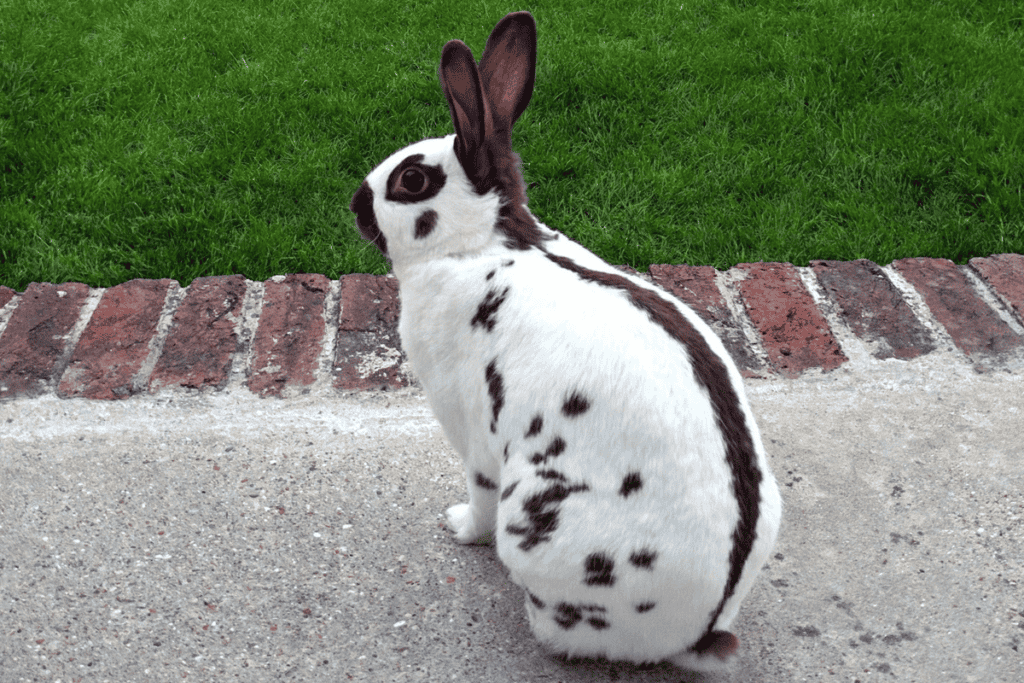
English Spotted rabbits were known in England for over 200 years before selective breeding began.
They became successful in rabbit shows and were exported to Germany in 1889. American breeders imported the refined breed in the early 1900s, and it was accepted as a distinct breed by the ARBA in 1914.
The English Spot is smaller than the Rhinelander and Checkered Giant breeds but has dark markings on its shoulders, unlike those two breeds.
It has a lean body and is harder to handle and breed to standard than most rabbit breeds.
Its value in the show ring is attached largely to the arrangement of its spots.
Flemish Giant Rabbit
- Country of Flemish Giant Rabbit Origin: Belgium
- Year Rec.: 1914
- Weight (Lbs): 14
- Status: Not Threatened
- Fur Type; Rollback; bright, glossy, dense
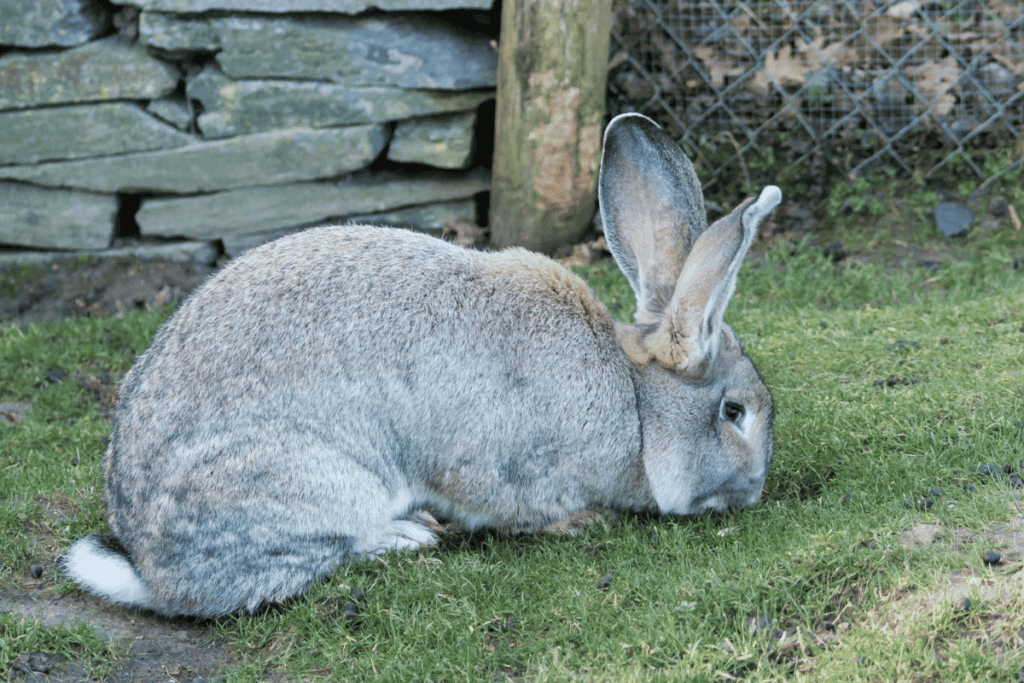
The Flemish Giant is a gentle rabbit breed that makes a good pet and can weigh between 15 to 20 pounds, although show rabbits are typically 10 to 14 pounds.
The breed originated in Belgium and was standardized using the Stone Rabbit and Patagonian Rabbit.
The first Flemish Giants were exported to the United States in the 1890s.
The breed shares its conformation with the Giant Chinchilla, but has several acceptable colors, unlike the Giant Chin, which only comes in chinchilla.
Florida White Rabbit
- Country of Florida White Rabbit Origin: US
- Year Rec.: 1967
- Weight (Lbs): 6
- Status: Not Threatened
- Fur Type; Flyback; ARBA Commercial Normal Fur Standard

Orville Milliken developed the Florida White rabbit breed in 1960 by using white Polish, New Zealands, and albino Dutch in his breeding program.
The breed was further advanced by Eabert (Fibber) McGhee in the 1970s. While the breed did not gain broad appeal as a meat rabbit, it is still used as a lab animal and has a good reputation in the small meat-rabbit niche.
The Florida White is a classic white rabbit with pink eyes and is half the size of an adult New Zealand.
Breeders can focus on maintaining breed conformation and fur quality as the breed only comes in white.
French Angora Rabbit
- Country of French Angora Rabbit Origin: France
- Year Rec.: 1939
- Weight (Lbs): 10.5
- Status: Not Threatened
- Fur Type; Wool, with great density

The French Angora rabbit is a larger breed than the English Angora, with a comparatively clean-shaven face and ear tufts restricted to the tips.
They require a lot of coat care due to their long, silky hair which can be spun into yarn.
The breed was likely brought to France from Turkey by British seamen in the early 1700s and spread rapidly, eventually being exported to Japan, China, and the United States.
French Lop Rabbit
- Country of French Lop Rabbit Origin: France
- Year Rec.: 1914
- Weight (Lbs): 11.5
- Status: Not Threatened
- Fur Type; Rollback; 1.25 inches (3.2 cm) long; thick, dense

The French Lop breed of rabbit was developed in Paris in the mid-19th century by mating English Lops with other giant rabbit breeds, resulting in a breed with shorter ears than its English forebears.
The French Lop was primarily bred for meat rather than exhibition, and selective breeding was not initially a priority.
The breed was officially recognized in France in 1922 and in the UK in the 1930s.
Although rare in North America, the establishment of the Lop Rabbit Club in 1970 renewed interest in both English and French Lops, which are popular breeds today. French Lops are said to make excellent house pets.
Giant Angora Rabbit
- Country of Giant Angora Rabbit Origin: US
- Year Rec.: 1988
- Weight (Lbs): 10
- Status: Not Threatened
- Fur Type; Wool, with great density

The Giant Angora is a relatively new breed in North America, recognized by the ARBA in 1988.
It was developed by Louise Walsh of Massachusetts, who originally owned German Angoras.
However, the ARBA officials suggested that she breed an animal considerably larger than the English Angora to achieve “separation” of the Angora breeds.
As a result, Walsh added French Lop and Flemish Giant blood to her Angora gene pool and created the Giant Angora.
The Giant Angora has a heavy, commercial body type and can only be shown as a ruby-eyed white.
It has forehead tufts, furry cheeks, and lightly fringed ears that are heavily tasseled, much like the German Angoras.
Giant Chinchilla Rabbit
- Country of Giant Chinchilla Rabbit Origin: US
- Year Rec.: circa 1928
- Weight (Lbs): 16
- Status: being watched
- Fur Type; Flyback; ARBA Commercial Normal Fur Standard

The Giant Chinchilla is the largest of the three Chinchilla breeds in North America, developed for fur and meat.
They typically weigh around 12 pounds but can reach up to 16 pounds.
Edward H. Stahl of Holmes Park, Missouri, developed the breed by crossbreeding Chinchillas, New Zealands, Flemish Giants, and American Blues in the early 1900s.
The breed initially had commercial success but fell out of favor after World War II. However, dedicated breeders have kept the Chinchilla breeds alive.
Harlequin Rabbit
- Country of Harlequin Rabbit Origin: Japan (possibly), France
- Year Rec.: 1914
- Weight (Lbs): 9.5
- Status: being studied
- Fur Type; Flyback; ARBA Commercial Normal Fur Standard
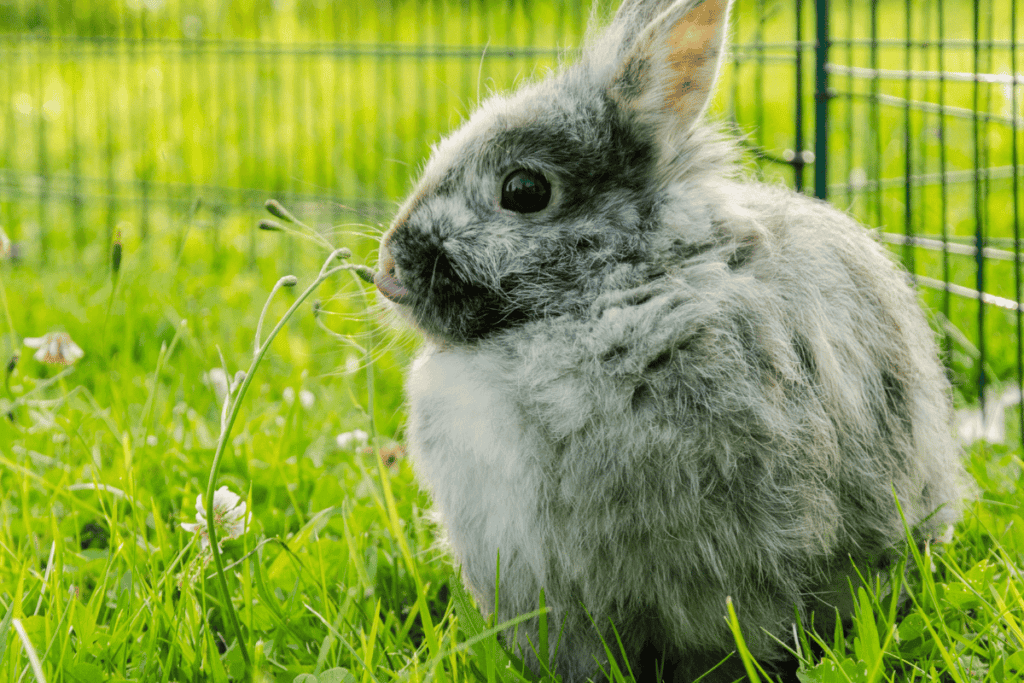
The Harlequin rabbit is easily recognizable by its unique fur color pattern, with alternating bands of color on its body, legs, and ears.
Originally known as the Japanese Rabbit, it may or may not have originated in Japan, but it was imported to France and England before arriving in the United States in 1917.
During World War II, its name was changed to Harlequin in the US and England due to political reasons.
The breed is medium-sized and weighs between 6.5 to 9.5 pounds.
The Harlequin is not very common in North America and has drawn the attention of The Livestock Conservancy study group.
Havana Rabbit
- Country of Havana Rabbit Origin: Netherlands
- Year Rec.: 1914
- Weight (Lbs): 6.5
- Status: Not Threatened
- Fur Type; Flyback; ARBA Commercial Normal Fur Standard; soft, dense, lustrous

The Havana rabbit breed was born in the Netherlands in 1898 from a chance mating between two nondescript rabbits, resulting in brown and white kits.
Established rabbit breeders were intrigued by the dark brown fur and introduced a new breed called Castor.
In 1903, the rabbits were shown in Paris, and the name “Havana” was employed due to the dark tobacco leaf of Cuban cigars.
The breed eventually included blues, blacks, and brokens and is still popular in North America for its gentle disposition and rich fur.
Himalayan Rabbit
- Country of Himalayan Rabbit Origin: Unknown
- Year Rec.: 1914
- Weight (Lbs): 4.5
- Status: Not Threatened
- Fur Type; ARBA Commercial Normal Fur Standard; short, fine, silky
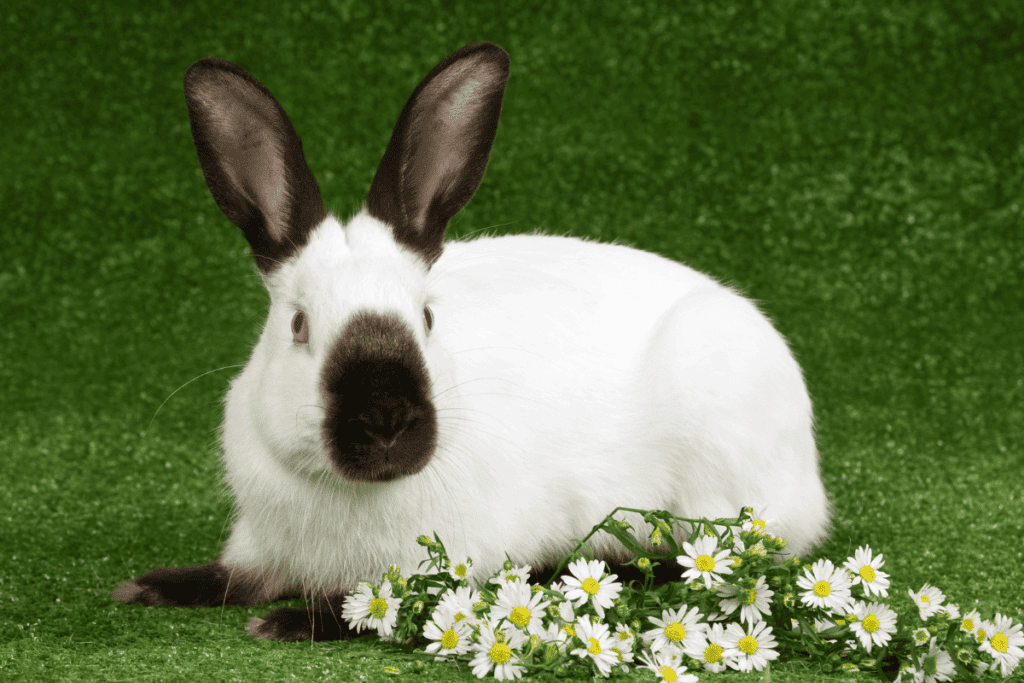
The Himalayan rabbit is a cylindrical North American breed with a white coat and colored points that develop over time.
It is an old breed with a laid-back nature, making it ideal for novice rabbit raisers.
Its origins are uncertain, but it is believed to have originated from northern India, China, and contiguous states.
It was imported to the United States in 1912 and became popular as an exhibition and fur rabbit, but its fur became less valuable over time as newer breeds emerged.
Holland Lop Rabbit
- Country of Holland Lop Rabbit Origin: Netherlands
- Year Rec.: 1979
- Weight (Lbs): 4
- Status: Not Threatened
- Fur Type; Rollback; 1 inch (2.5 cm) long; glossy, dense, fine
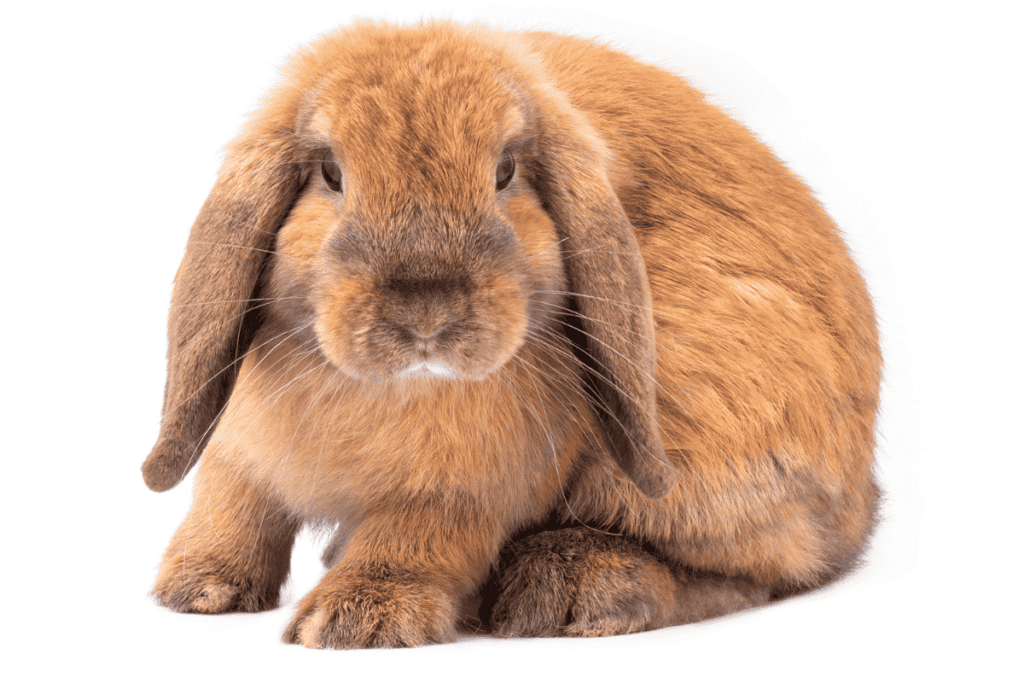
The Holland Lop is a small breed of rabbit that is popular due to its small size and variety of fur colors.
It was created by Adrian de Cock of Tilburg, Netherlands, who wanted to make a smaller version of the French Lop.
After using French Lops, Netherland Dwarfs, and English Lops in his breeding program, he successfully downsized the breed to the 4-pound animal recognized today as the Holland Lop.
The breed quickly spread throughout Europe and was introduced to the United States in 1974, where it was embraced enthusiastically.
Jersey Wooly Rabbit
- Country of Jersey Wooly Rabbit Origin: US
- Year Rec.: 1988
- Weight (Lbs): 3.5
- Status: Not Threatened
- Fur Type; Wool; slightly coarse with abundant guard hairs
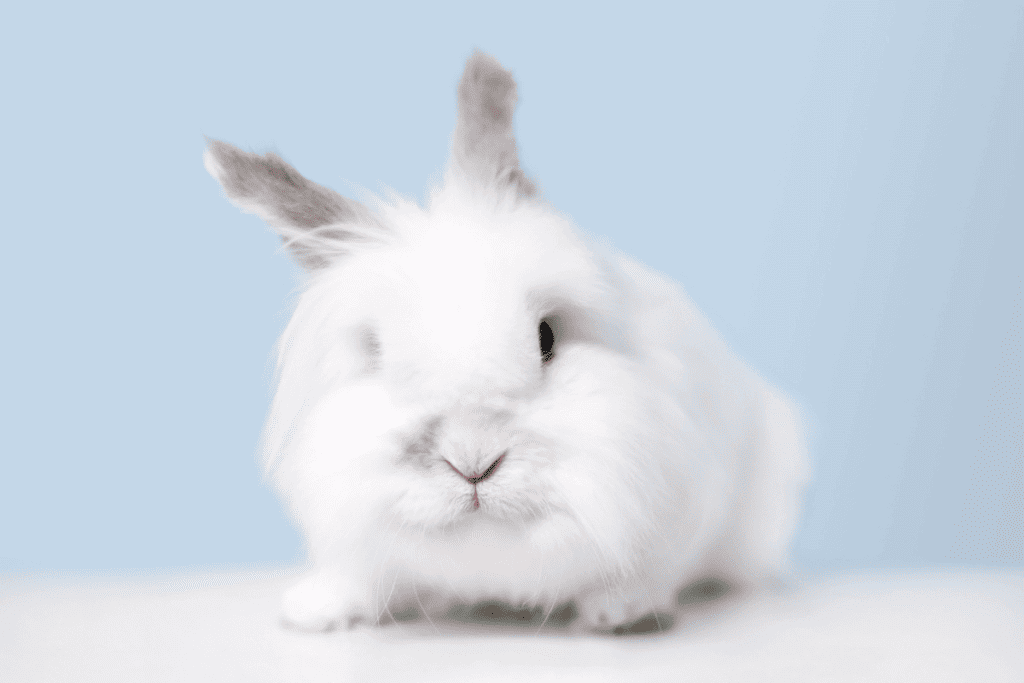
The Jersey Wooly is a breed of rabbit named after the state of New Jersey, and was created by Bonnie Seeley in the 1970s.
It was bred to be a small, easy-to-care-for pet rabbit with a wooly coat.
Seeley used Netherland Dwarfs, Angoras, Chinchillas, and a small Silver Marten in her breeding program to create the breed.
The Jersey Wooly has a coat that is easy to groom, with longer fur on the head and shorter wool in front of the ears. It was recognized by the ARBA in 1988.
Lilac Rabbit
- Country of Lilac Rabbit Origin: England
- Year Rec.: circa 1928
- Weight (Lbs): 8
- Status: being studied
- Fur Type; Rollback; 1 inch (2.5 cm) long; dense

The Lilac Rabbit is named after the lilac bush due to its light purple color, but the rabbit itself has a pinkish dove or dove gray coat.
They were bred for meat and fur and have a dense, soft, and silky coat.
The Lilac breed was developed in England by different breeders using Havanas, Blue Imperials, and Blue Beverens, and eventually merged.
A similar rabbit called the Gouda was established by Dutch breeders, and it may have been used in refining the English Lilacs in the US.
The Lilac Rabbit has never been common in North America and is on The Livestock Conservancy’s watch list.
Lionhead Rabbit
- Country of Lionhead Rabbit Origin: Belgium
- Year Rec.: 2014
- Weight (Lbs): 3.75
- Status: Not Threatened
- Fur Type; Wool; rollback; soft, dense, of medium length; saddle clear of wool; mane at least 2 inches (5 cm) long
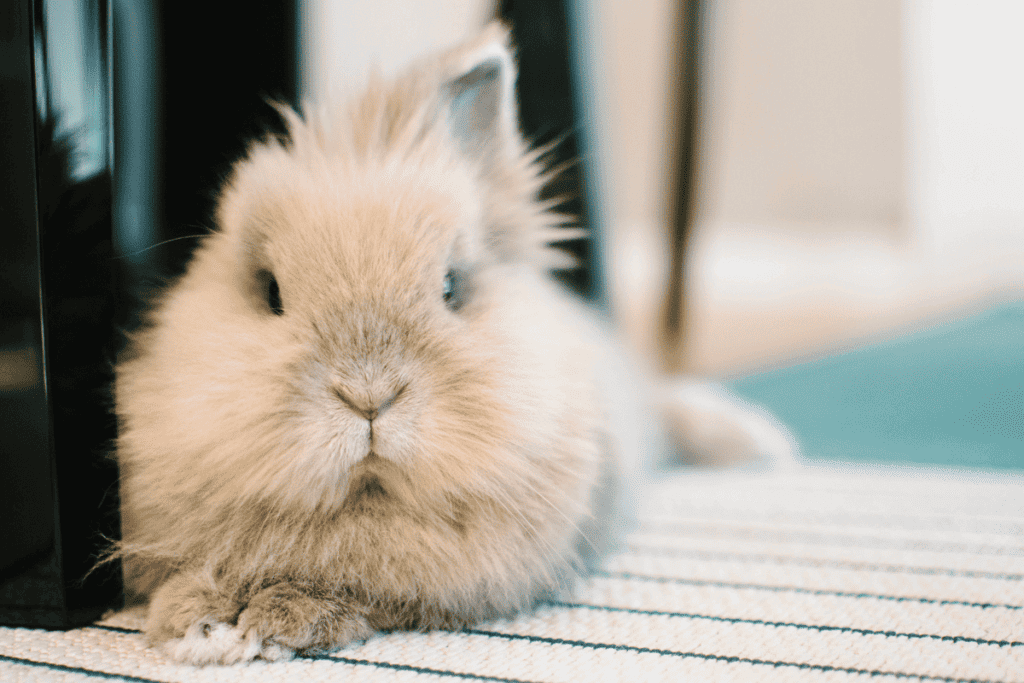
The Lionhead Rabbit is a small rabbit breed with a mane that spikes from its head and chest.
Its fur does not extend from the flanks or hind end. The breed originated from a gene mutation in Belgium prior to 1960 and was brought to England in the mid-1990s and the United States shortly after.
Breeders strive to achieve a full-circle mane with strands of fur 2 to 3 inches (5 to 7.6 cm) long.
Lionheads should not weigh more than 3.5 pounds (1.6 kg) and make excellent pets due to their small size, winning temperament, and adaptable nature.
Mini Lop Rabbit
- Country of Mini Lop Rabbit Origin: Germany
- Year Rec.: 1981
- Weight (Lbs): 6.5
- Status: Not Threatened
- Fur Type; Rollback; medium in length; dense, glossy, lustrous
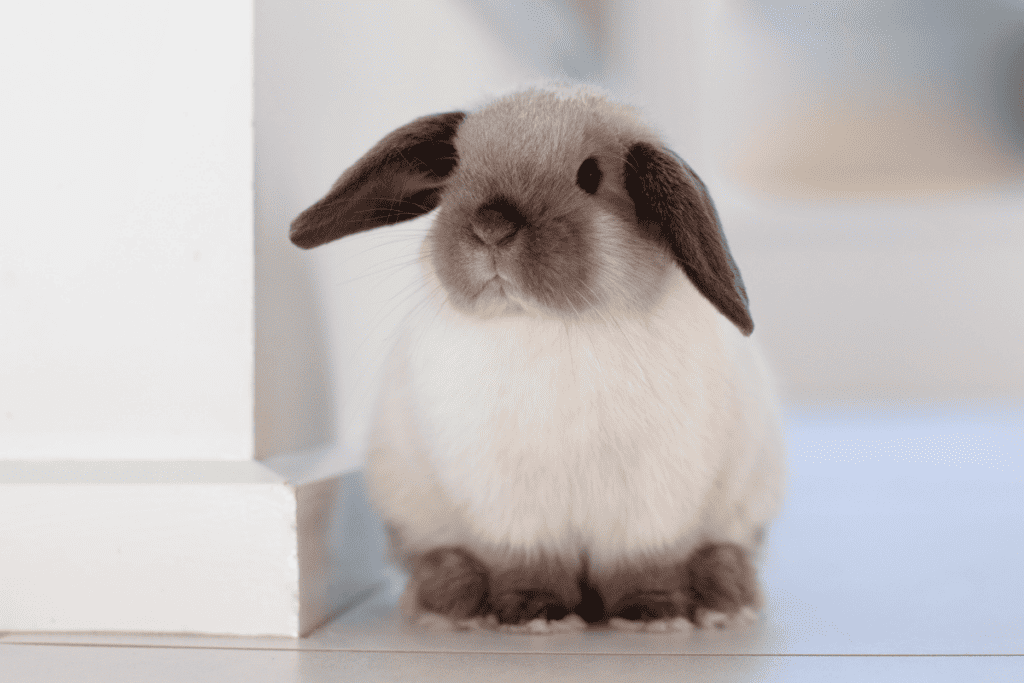
The Mini Lop rabbit breed can weigh up to 6.5 pounds, making it larger than other “mini” rabbit breeds.
It has a compact body, a dense, shiny coat, and may have a dewlap. Mini Lops are calmer and more sedentary than Holland lops.
The breed was developed in Germany in the mid-1950s and was infused with at least six other rabbit breeds.
Mini Rex Rabbit
- Country of Mini Rex Rabbit Origin: US
- Year Rec.: 1988
- Weight (Lbs): 4.5
- Status: Not Threatened
- Fur Type; Rex type; 5/8 inch (1.6 cm) long; extremely dense, straight, upright; lustrous, plush, with noticeable spring when touched

The Mini Rex is a breed of rabbit known for its thick, short, velvety fur, which is the result of a genetic mutation that occurred in 1919.
This mutation produced a litter of rabbits with underfur of uniform length and guard hairs of the same length, providing a unique, smooth finish.
The modern-day Mini Rex was established by Mona Berryhill in 1986, and its popularity soared, resulting in several colors appearing due to the breed’s ancestry.
Mini Satin Rabbit
- Country of Mini Satin Rabbit Origin: US
- Year Rec.: 2006
- Weight (Lbs): 4.75
- Status: Not Threatened
- Fur Type; Rollback; Satin type; silky, fine, very dense, and interspersed thickly with lustrous guard hairs, creating sheen and resiliency

Mini Satin is a breed of rabbit known for its shiny coat and compact body.
It was developed in the 1970s by Ariel Hayes through crossbreeding standard Satins with Polish rabbits, and later with Mini Rex and Netherland Dwarf rabbits.
Hayes stopped breeding in 1982, but the breed was eventually established and recognized by the ARBA thanks to the efforts of J. Leo Collins of Salem, Ohio.
Netherland Dwarf Rabbit
- Country of Netherland Dwarf Rabbit Origin: Netherlands
- Year Rec.: 1969
- Weight (Lbs): 2.5
- Status: Not Threatened
- Fur Type; Rollback; soft, dense, with gloss

The Netherland Dwarf is a small rabbit breed with big eyes and a cute appearance.
Despite its size, it has a spunky attitude and may use its teeth to settle disagreements. It is one of the three most popular exhibitor breeds in North America and has a maximum weight of 2.5 pounds.
The breed was developed in Germany in the early 20th century and nearly went extinct during World War II, but it was restored and refined by breeders from various countries.
New Zealand Rabbit
- Country of New Zealand Rabbit Origin: US
- Year Rec.: 1958
- Weight (Lbs): 11
- Status: Not Threatened
- Fur Type; Flyback; ARBA Commercial Normal Fur Standard

The New Zealand rabbit breed was developed in California, USA, and its name is believed to have been chosen erroneously.
The breed comes in red and white varieties and is used for meat, fur, the laboratory industry, and shows.
It is a popular breed for commercial rabbit operations and can also make a good house rabbit.
Palomino Rabbit
- Country of Palomino Rabbit Origin: US
- Year Rec.: 1957
- Weight (Lbs): 11
- Status: Not Threatened
- Fur Type; Flyback; ARBA Commercial Normal Fur Standard

The Palomino rabbit was developed in the 1940s and 1950s by Mark Young from Coulee Dam, Washington.
He selected buckskin and yellow-brown specimens from meat-type rabbits and developed two color variations of the Palomino.
Young did not know the original bloodlines, but it is evident that the New Zealand breed contributed.
The name Palomino was chosen through a contest. Palominos are medium to large, with well-developed shoulders and hindquarters, and can weigh up to 11 pounds.
They have a reputation for being trainable and having a pleasant disposition.
Polish Rabbit
- Country of Polish Rabbit Origin: England
- Year Rec.: 1914
- Weight (Lbs): 3.5
- Status: Not Threatened
- Fur Type; Flyback; ARBA Commercial Normal Fur Standard; short, dense, and fine with glossy luster
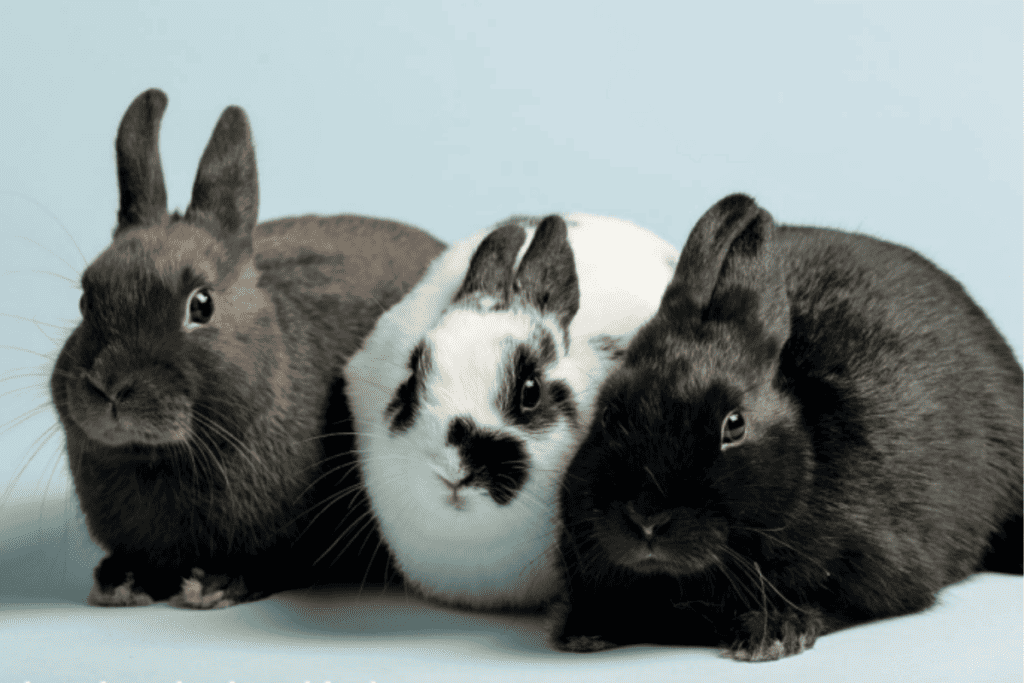
The Polish rabbit breed was originally white but now comes in a variety of colors. They are small and weigh no more than 3.5 pounds.
The breed likely originated from selective breeding of “common hutch rabbits” in England, but may have also come from Germany.
The breed was introduced to the United States in 1912 and recognized by the National Pet Stock Association in 1914.
Rex Rabbit
- Country of Rex Rabbit Origin: France
- Year Rec.: circa 1932
- Weight (Lbs): 10.5
- Status: Not Threatened
- Fur Type; Rex type; – 1/2 – 7/8 inch (1.3–2.2 cm) long, extremely dense, straight, upright; lustrous, plush, with noticeable spring when touched
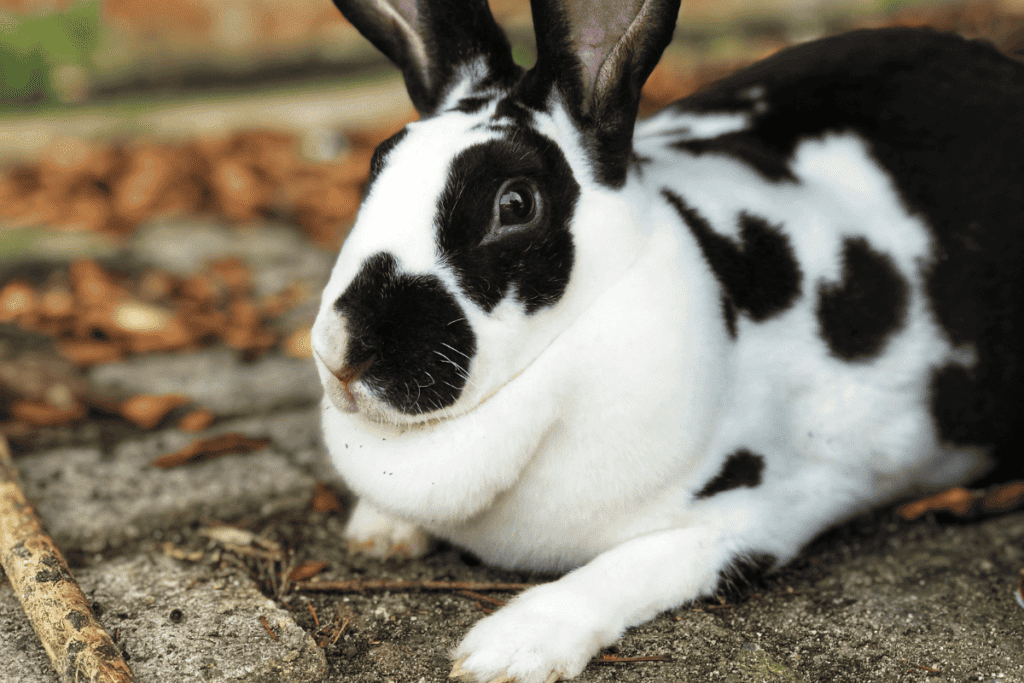
The Rex rabbit is a medium-to-large-sized rabbit known for its luxurious fur, which is soft and velvety due to the same length of its underfur and guard hairs.
It originated in Coulongé, France, in 1919 as a fur mutation in a litter of non-purebred rabbits, and was later selectively bred for its fur.
The breed was introduced to the United States in 1924 and imported rabbits were highly valued, with pairs selling for up to $1,500.
Rhinelander Rabbit
- Country of Rhinelander Rabbit Origin: Germany
- Year Rec.: 1975
- Weight (Lbs): 10
- Status: being watched
- Fur Type; : Flyback; ARBA Commercial Normal Fur Standard; short, dense, fine, smooth in texture

The Rhinelander rabbit is a medium-sized breed developed in Germany in the late 1800s.
It has a distinct two-color pattern on a white body with a streak along its spine, a dark butterfly mark on its muzzle, and dark eye bands.
It has a fairly long body with a graceful, hare-like arch and dense, silky fur, and carries its ears in a V shape.
It is challenging to exhibit due to its exacting color distribution standards.
The breed made its debut in the United States in 1923 but disappeared from the American rabbit fancy less than a decade later.
It made a comeback in the 1970s and reappeared on the ARBA breeds roster in 1975, but it remains an uncommon breed.
Satin Rabbit
- Country of Satin Rabbit Origin: US
- Year Rec.: 1956
- Weight (Lbs): 11
- Status: Not Threatened
- Fur Type; Rollback; Satin type; silky, fine, very dense and interspersed with lustrous guard hairs, creating sheen and resiliency

In 1934, Walter Huey attempted to improve his Havana Rabbits through inbreeding, resulting in the accidental creation of the Satin fur type.
This fur type was characterized by its texture and sheen, and rapidly became popular in the 1950s, leading to the formation of the Satin Club.
Today, the Satin breed is renowned for its show, table, and fur qualities and comes in two sizes: standard and mini.
Satin Angora Rabbit
- Country of Satin Angora Rabbit Origin: Canada
- Year Rec.: 1987
- Weight (Lbs): 9.5
- Status: Not Threatened
- Fur Type; Wool; 3 inches (7.6 cm) long; finer than other Angora breeds but with similar great density

The Satin Angora is a medium-to-large rabbit breed developed in the early 1980s by Leopoldina P. Meyer of Ontario, Canada.
It is a cross between a wooly Satin Rabbit and a fawn-colored French Angora.
It is prized for its dense long wool, which is finer than other Angoras and has a distinctive sheen. It has an oval-shaped head, and comparatively “clean-shaven” face, and erect ears.
Silver Rabbit
- Country of Silver Rabbit Origin: England
- Year Rec.: 1914
- Weight (Lbs): 7
- Status: threatened
- Fur Type; Flyback; ARBA Commercial Normal Fur Standard; short, smooth, close to body

The Silver Rabbit is one of the oldest and rarest breeds of rabbit in North America, having been recognized by the National Pet Stock Association in 1914.
Its ancestry dates back to 1631, though the exact origins are unknown.
The breed is characterized by its silvery tone and darker fur field, as well as its standard rabbit body.
It is similar to the Silver Fox Rabbit, but is smaller and has a short, flat coat in comparison.
Silver Fox Rabbit
- Country of Silver Fox Rabbit Origin: US
- Year Rec.: 1925
- Weight (Lbs): 12
- Status: Threatened
- Fur Type; Rollback, 1.5 Inches long and dense with luster
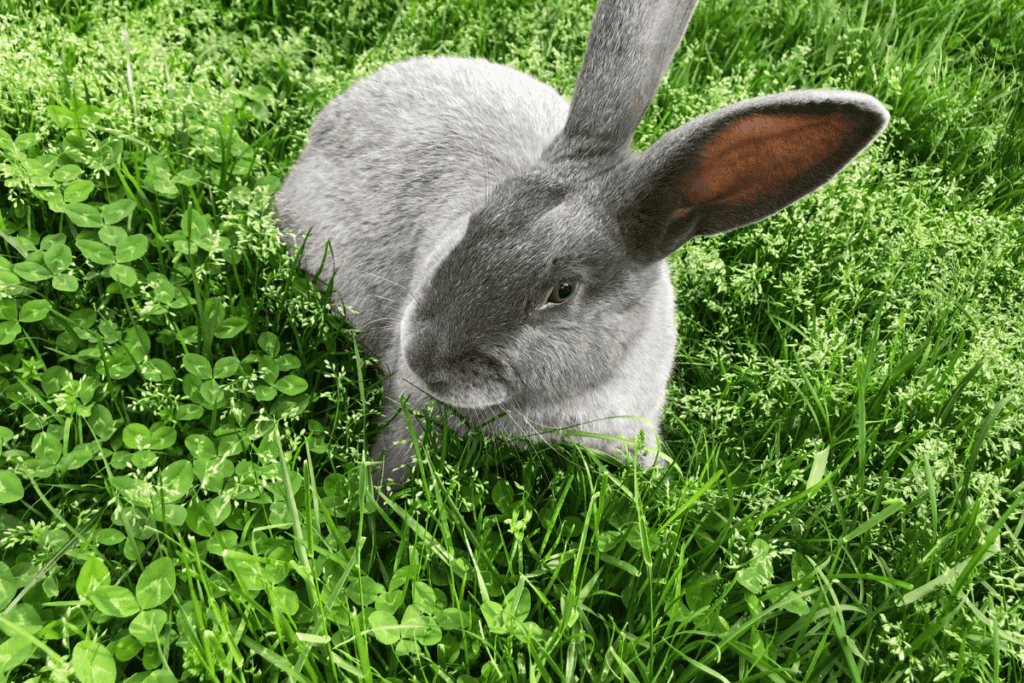
The Silver Fox Rabbit is a gentle, large breed of rabbit renowned for its fur.
It was developed in the 1920s by Walter B. Garland in North Canton, Ohio and may have been the result of crosses with the Checkered Giant, Champagne d’Argent, and American Blue.
It was originally known as the American Heavyweight Silver and the name was later changed to Silver Fox due to its silvery color.
The breed is currently only recognized by the ARBA in black, although efforts are being made to restore the blue coat.
It is on The Livestock Conservancy’s threatened list, but has been in the upper 50% of by-breed registration totals in recent years.
Silver Marten Rabbit
- Country of Silver Marten Rabbit Origin: France, England, United States
- Year Rec.: 1929
- Weight (Lbs): 9.5
- Status: Not Threatened
- Fur Type; Flyback; ARBA Commercial Normal Fur Standard

The Silver Marten is a breed of rabbit developed in the early 1920s when black Chinchilla Rabbit kits began appearing in litters in Europe, England, and the United States.
These rabbits had a combination of Tan Rabbit genes and Chinchilla genes, and when they were mated together, they produced offspring true to type and color.
They were accepted by the ARBA in 1929, and they have dense fur with evenly distributed white-tipped guard hairs, white nostrils, and belly, and silver-white eyes.
The ideal weight for an adult Silver Marten is 8.5 pounds for does and 7.5 pounds for males.
Standard Chinchilla Rabbit
- Country of Standard Chinchilla Rabbit Origin: France
- Year Rec.: circa 1923
- Weight (Lbs): 7.5
- Status: Not Threatened
- Fur Type; Rollback; 1 1/8 –1 3/8inches (2.9–3.5 cm) long; very dense with fine texture
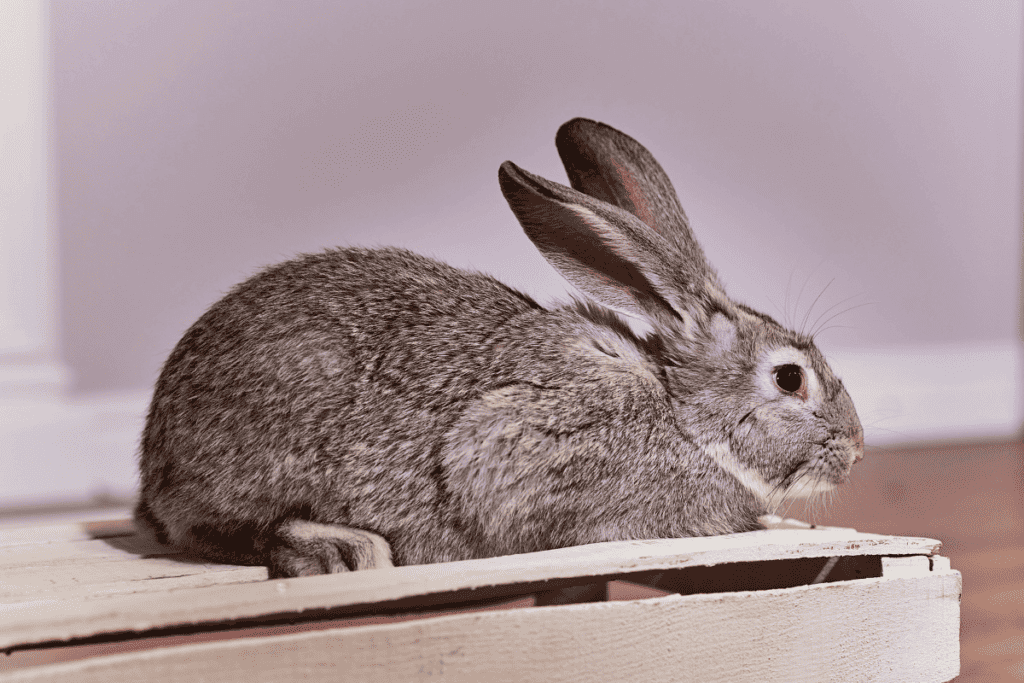
The Standard Chinchilla rabbit breed was developed in France by engineer M.J. Dybowski in 1913, likely using a combination of Beverens, Himalayans, Tans, and a wild rabbit.
When it was exhibited in the United States in 1919, breeders were excited about its fur color and compactness.
Subsequently, Giant and American Chinchillas were developed, which are larger than the original Standard Chinchilla.
These days, Standard Chinchillas are mostly kept as pets or for shows, and their fur is not as valued as it once was, as they are too small to be used as meat rabbits.
The breed has a dark, slate-blue base color with levels of pearl and black, ticking of black guard hairs, and light pearl-colored eye bands.
Tan Rabbit
- Country of Tan Rabbit Origin: England
- Year Rec.: 1914
- Weight (Lbs): 6
- Status: Not Threatened
- Fur Type; Flyback; ARBA Commercial Normal Fur Standard; medium-fine, short, high gloss

The Tan is a full-arch rabbit breed originating from Derbyshire, England, with a distinctive black, blue, chocolate, or lilac fur trimmed with reddish mahogany.
It was selectively bred from a mixture of common hutch rabbits, wild European rabbits, and Dutch breeders.
Belgian Hares were later introduced to the gene pool to bring size and an athletic physique to the breed.
The Tans were then further bred with Silver Rabbit genes to create the breed as we know it today.
They arrived in the United States in 1908 with an accepted standard by 1914.
Thrianta Rabbit
- Country of Thrianta Rabbit Origin: Netherlands
- Year Rec.: 2006
- Weight (Lbs): 6
- Status: Not Threatened
- Fur Type; Rollback; 1 inch (2.5 cm) long; soft, dense

The Thrianta is a breed of rabbit with a soft, dense coat that is a bright, intense reddish hue.
It was originally developed by a Dutch man in the 1930s but was nearly wiped out during the war.
In the 1960s, Dutch breeders reintroduced the improved Thrianta to the Dutch rabbit fancy, and it reached England in the early 1980s.
The breed was imported to the US in 1996 and was officially accepted by the ARBA in 2006.
Other articles you may also like:
- 10 Most Expensive Rabbit Breeds (with Images)
- Popular Pet Rabbit (Bunny) Names (Girl/Boy)
- 8 Rare Breeds of Rabbit (with Images)
- 10 Calmest/Friendliest Breeds of Rabbit (with Images)
- French Lop vs. Holland Lop Rabbit
- 5 Smallest Breeds of Pet Rabbits (You Can Buy)
- What’s the Difference between Bunny and Rabbit?
- 5 Best Indoor Rabbit Breeds

